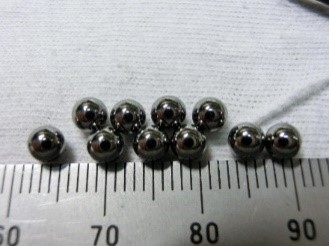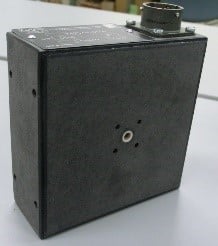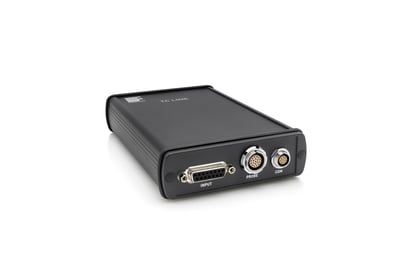The basic structure of a bearing consists of an inner/outer ring and steel balls, which are called rolling elements. One bearing contains ten to several dozen steel balls. If even one of these balls fails, however, the bearing quickly loses its ability to perform to its full potential and eventually breaks down. Depending on the type of ball, this could lead to a major accident, making it a major challenge for producers to ensure that these balls are inspected in a lowcost, high-efficiency manner.
Bearings are made of high-carbon chromium steel, an extremely hard, wear-resistant steel called bearing steel. In steelmaking, too, composition is controlled to prevent impurities from being mixed in. In wire rod rolling, too, very fine control is used to prevent decarburization. The same can be said for the secondary drawing process.
Steel balls for bearings are made by cutting wire into small pieces of a certain length, cold forging, grinding and heat treatment. Possible causes of these processes include adulteration of foreign materials, hardness or seizure in the heat treatment process, and defects in the polishing process.
In most manufacturing facilities, products are made with several grades of steel, not just one. It is impossible to tell the difference between them visually, but even a single steel ball in a single bearing can cause a major problem if it contains a completely different grade of steel. Cracks and grinding cracks that occur during hardness and heat treatment are also a problem, but quality control through spot-checking is not an option.
In such cases, electromagnetism can be used to sort out defective balls in a short time and at a low cost.


Fig.1: Steel balls and encircling coil
In this method, an eddy current is passed through a steel ball and the impedance change is used to perform the inspection.
A steel ball passes through an encircling coil, and the impedance of the test coil changes when a ball with dissimilar materials, heat treatment abnormality, or cracks passes through the coil, and the ball is determined. The impedance is affected by the electrical conductivity and magnetic permeability. Conductivity is affected by the chemical composition of different grades of steel, and magnetic permeability is affected by hardness. This hardness is caused by differences in the crystal structure of the metal. Cracking is also caused by the strain of the metal crystal, which also affects the magnetic permeability.


Fig. 2: MAGNATEST TCL and MAGNATEST D
FOERSTER‘s MAGNATEST D and MAGNATEST TCL test instruments are recommended for the inspection of such bearings for material mix-ups, hardness condition and grinding cracks.